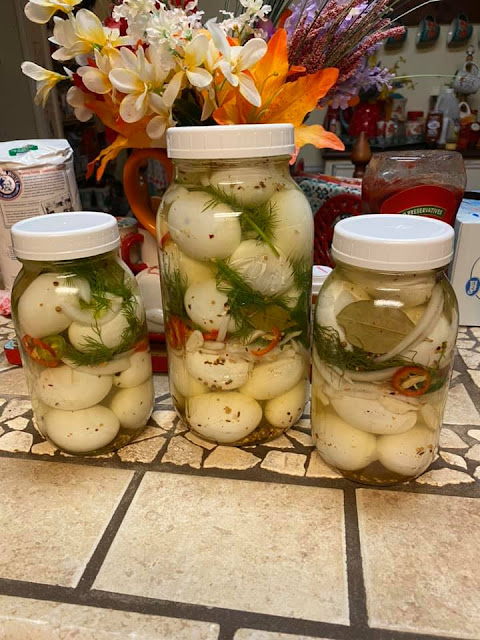Homemade Roasted Tomato, Garlic, and Basil Soup: A Taste of Italy with Fresh Garden Ingredients
Wow! Thank you all for the kind comments and interest in my homemade Roasted Tomato, Garlic, and Basil Soup.
While I don't have an exact recipe with precise measurements, I can share with you the process I learned from my Italian grandfather, who believed in making everything from scratch. Get ready to embark on a flavorful journey with garden-fresh ingredients and the essence of Italian tradition.
The key to this soup lies in the quality of the ingredients. In our garden, my husband and I plant various types of tomatoes, including Italian, San Marzano, Amish paste, Roma, and mountain fresh. We also grow our own garlic, using Spanish Roja and Adlio de Sulmona varieties. The herbs, of course, come fresh from the garden as well.
To begin, I chop up a generous amount of tomatoes, filling two roasting pans. And when I say generous, I mean tons of tomatoes! The same goes for garlic – you can never have enough. I add a handful of fresh basil leaves and season the mixture with salt, pepper, and any other herbs or spices you prefer. Finally, I drizzle the tomatoes with olive oil to enhance the flavors during roasting.
The tomatoes go into the oven and roast for about 75-80 minutes. The aroma that fills the kitchen is simply heavenly. Once the roasted tomatoes have cooled down, I blend them together to create a smooth texture. To ensure a velvety consistency, I pass the mixture through a sieve to remove the seeds and any extra bits.
Next, I transfer the soup into a 10-quart stock pot. As it simmers, the flavors meld together beautifully. Keep in mind that the cooking process reduces the volume, so expect a yield of about 8-9 quarts of soup. To add a touch of brightness, I incorporate 2 tablespoons of lemon juice into each quart jar.
Now comes the canning part. This soup is unique in that it can be preserved using the water bath canning method. For other soups, I typically use pressure canning. Place the filled quart jars in a water bath canner and process them for 50 minutes.
This step ensures that the soup is safely preserved and ready to enjoy even when tomatoes are out of season.
The result is a rich, flavorful soup that captures the essence of Italian cuisine. Each spoonful takes you on a journey to the sun-drenched gardens of Italy, where fresh ingredients and traditional cooking methods are celebrated.
I hope this glimpse into my homemade Roasted Tomato, Garlic, and Basil Soup inspires you to embrace the beauty of using garden-fresh produce and traditional techniques. Taste the love and dedication that go into each jar of this delightful soup, preserving the flavors of summer for year-round enjoyment.
FAQs:
1. Can I use different types of tomatoes for this soup?
Absolutely! The beauty of this recipe lies in the variety of tomatoes you can use. Experiment with different types, such as Roma, cherry, or heirloom tomatoes, to create unique flavor profiles. Just remember to adjust the quantity and cooking time accordingly.
2. Can I use dried herbs instead of fresh ones?
While fresh herbs from the garden provide the most vibrant flavors, you can use dried herbs if fresh ones aren't available. Keep in mind that the intensity of flavors may vary, so adjust the quantities to taste. Dried basil, for example, is more potent than fresh, so use it sparingly.
3. How long does the canned soup last?
When properly canned using the water bath method and stored in a cool, dark place, this soup can last for up to a year. However, for the best quality and flavor, it is recommended to consume the soup within 6-8 months. Always check the jars for any signs of spoilage before enjoying the soup.
Roasted tomato soup, Italian recipe, garden-fresh ingredients, canning, water bath canning






























Comments